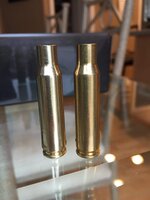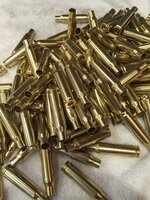- Thread Starter
- #121
I'd love to hear back on your results. That qty of soap is what was recommended to me here (I believe in this thread). I did use about 1/2 that this last batch, and it seemed to clean just fine. On a side note, my batch loads have only been about 130-160 .308 cases, albeit, they had some nasty green corrosion in many of the primer pockets and inside some of the necks as well.Use it by itself, it's just a very concentrated surfactant and water conditioner. This mimics the action of the Dawn / Lemishine combo that many are using.
In a side note, you are using far more Dawn than any others I know about. I use a "strong squirt" which probably amonnts to 1/3 the amount you are using. I would think an 1/8 cup would take longer to completely rinse. How did you arrive at that amount?
I'm tumbling a couple of batches of .5.56 today and will.try more soap with one so I can compare the cleaning results and rinse time. I'll report back what I find if anybody cares to hear?
PS: I love the Franklin wet tumbler which replaced a Dillon FL 2000 that finally died. Spotless brass (inside and out), any "iffy" post-firing compounds removed (lead, salts etc.), low noise, (can actually work in the same room and carry on a conversation while tumbling) no lead laced dust to breath (from the primer residue) and the process takes less time even when factoring drying time if you use some form of low level heat, like a warm oven. Just my take on it.














